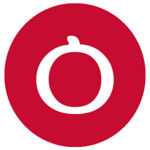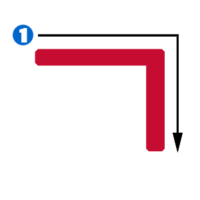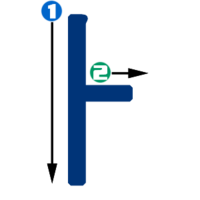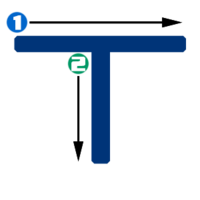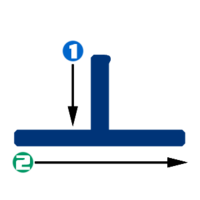Difference between revisions of "Hangeul step 2/fr"
DigitalSoju (Talk | contribs) (Created page with '{{HangeulTop/fr}} {| border=0 style="text-align:center; margin-left: auto; margin-right: auto;" |- | 150px | [[File:Next.png|link=Hange...') |
|||
| (18 intermediate revisions by 2 users not shown) | |||
| Line 3: | Line 3: | ||
{| border=0 style="text-align:center; margin-left: auto; margin-right: auto;" | {| border=0 style="text-align:center; margin-left: auto; margin-right: auto;" | ||
|- | |- | ||
| − | | [[File: | + | | [[File:Precedent.png|link=Hangeul step 1/fr|150px]] |
| − | | [[File: | + | | [[File:Suivant.png|link=Hangeul step 3/fr|150px]] |
|} | |} | ||
| + | |||
| + | ==Êtes-vous venu directement sur l'étape 2 ?== | ||
| + | Avez-vous sauté l'[[Hangeul step 1/fr|étape 1]] parce que vous étiez impatient de commencer à apprendre l'alphabet ? Ne faites pas ça ! Nous vous recommandons de retourner à l'[[Hangeul step 1/fr|étape 1]] et de lire les informations générales sur le Hangeul, il y a d'importants détails qui vous aideront plus tard à ne pas être confus. | ||
==Introduction== | ==Introduction== | ||
| − | [[File:Syllable blocks1.png|right|thumb|250px| | + | [[File:Syllable blocks1.png|right|thumb|250px|Une consonne couplée avec une voyelle horizontale et une consonne couplée avec une voyelle verticale]] |
| − | + | Nous allons introduire les consonnes et voyelles en couple comme les consonnes ne peuvent pas être prononcées sans l'aide d'une voyelle. Les étapes 2 jusqu'à 4 comprennent toutes, soit une consonne couplée avec une voyelle horizontale, soit une consonne couplée avec une voyelle verticale. | |
| − | + | Dans cette leçon, vous apprendrez : | |
| − | * | + | * Les consonnes suivantes : [[ㄱ]], [[ㄴ]], [[ㅁ]], [[ㄷ]], [[ㅇ]] |
| − | * | + | * Les voyelles suivantes : [[ㅏ]], [[ㅜ]], [[ㅗ]], [[ㅣ]] |
| − | + | Prenez note que certains fichiers sont configurés pour tourner en boucle, vous devrez alors les arrêter manuellement. | |
{{-}} | {{-}} | ||
| − | == | + | |
| − | {{Hangeul intro table | + | ==Étape 2== |
| + | {{Hangeul intro table/fr | ||
|bgcolor = {{kred}} | |bgcolor = {{kred}} | ||
|Consonant = ㄱ | |Consonant = ㄱ | ||
|Cons image = ㄱ.jpg | |Cons image = ㄱ.jpg | ||
| − | |Cons text = | + | |Cons text = Prononcée entre G et K au début d'un mot. Cependant, lorsqu'elle se trouve entre deux voyelles, elle est prononcée /g/. Symbol [[IPA]] : /k/ /g/. Pour plus d'informations, voir [[ㄱ]]. |
|Vowel = ㅏ | |Vowel = ㅏ | ||
|Vowel image = ㅏ.jpg | |Vowel image = ㅏ.jpg | ||
| − | |Vowel text = | + | |Vowel text = Voyelle verticale écrite à droite de la consonne. Pensez à <a> dans <ami>. Symbole [[IPA]] : /a/. Pour plus d'informations, voir [[ㅏ]]. |
| − | |Vowel audio description1 = | + | |Vowel audio description1 = Homme |
|Vowel audio1 = <flashmp3>a H.mp3|leftbg=003478|rightbg=c60c30|lefticon=ffffff|righticon=ffffff</flashmp3> | |Vowel audio1 = <flashmp3>a H.mp3|leftbg=003478|rightbg=c60c30|lefticon=ffffff|righticon=ffffff</flashmp3> | ||
| − | |Vowel audio description2 = | + | |Vowel audio description2 = Femme |
|Vowel audio2 = <flashmp3>a M.mp3|leftbg=003478|rightbg=c60c30|lefticon=ffffff|righticon=ffffff</flashmp3> | |Vowel audio2 = <flashmp3>a M.mp3|leftbg=003478|rightbg=c60c30|lefticon=ffffff|righticon=ffffff</flashmp3> | ||
}} | }} | ||
| Line 34: | Line 38: | ||
{| class="wikitable" style="text-align:center; margin-left: auto; margin-right: auto; font-size:300%;" | {| class="wikitable" style="text-align:center; margin-left: auto; margin-right: auto; font-size:300%;" | ||
|-style="font-size:70%" | |-style="font-size:70%" | ||
| − | !colspan="2"| | + | !colspan="2"|Entraînement |
|- | |- | ||
| 가 | | 가 | ||
| Line 42: | Line 46: | ||
| − | {{Hangeul intro table | + | {{Hangeul intro table/fr |
|bgcolor = {{kred}} | |bgcolor = {{kred}} | ||
|Consonant = ㄴ | |Consonant = ㄴ | ||
|Cons image = ㄴ.jpg | |Cons image = ㄴ.jpg | ||
| − | |Cons text = | + | |Cons text = Prononcée comme N en français. Symbole [[IPA]] : /n/. Pour plus d'informations, voir [[ㄴ]]. |
|Vowel = ㅜ | |Vowel = ㅜ | ||
|Vowel image = ㅜ.jpg | |Vowel image = ㅜ.jpg | ||
| − | |Vowel text = | + | |Vowel text = Ce son est semblable au son "OU" français ou "OO" anglais (par exemple m'''oo'''n) ou '''U''' espagnol (par exemple "'''u'''sted"). Voyelle horizontale écrite sous la consonne. Symbole [[IPA]] : /u/. Pour plus d'informations, voir [[ㅜ]]. |
| − | |Vowel audio description1 = | + | |Vowel audio description1 = Homme |
|Vowel audio1 = <flashmp3>u H.mp3|leftbg=003478|rightbg=c60c30|lefticon=ffffff|righticon=ffffff</flashmp3> | |Vowel audio1 = <flashmp3>u H.mp3|leftbg=003478|rightbg=c60c30|lefticon=ffffff|righticon=ffffff</flashmp3> | ||
| − | |Vowel audio description2 = | + | |Vowel audio description2 = Femme |
|Vowel audio2 = <flashmp3>u M.mp3|leftbg=003478|rightbg=c60c30|lefticon=ffffff|righticon=ffffff</flashmp3> | |Vowel audio2 = <flashmp3>u M.mp3|leftbg=003478|rightbg=c60c30|lefticon=ffffff|righticon=ffffff</flashmp3> | ||
}} | }} | ||
| Line 58: | Line 62: | ||
{| class="wikitable" style="text-align:center; margin-left: auto; margin-right: auto; font-size:300%;" | {| class="wikitable" style="text-align:center; margin-left: auto; margin-right: auto; font-size:300%;" | ||
|-style="font-size:70%" | |-style="font-size:70%" | ||
| − | !colspan="2"| | + | !colspan="2"|Entraînement |
|- | |- | ||
| 누 | | 누 | ||
| Line 72: | Line 76: | ||
| − | {{Hangeul intro table | + | {{Hangeul intro table/fr |
|bgcolor = {{kred}} | |bgcolor = {{kred}} | ||
|Consonant = ㅁ | |Consonant = ㅁ | ||
|Cons image = ㅁ.jpg | |Cons image = ㅁ.jpg | ||
| − | |Cons text = | + | |Cons text = Prononcée comme le M français. Symbole [[IPA]] : /m/. Pour plus d'informations, voir [[ㅁ]]. |
|Vowel = ㅗ | |Vowel = ㅗ | ||
|Vowel image = ㅗ.jpg | |Vowel image = ㅗ.jpg | ||
| − | |Vowel text = | + | |Vowel text = Prononcée comme "eau". Voyelle horizontale écrite sous la consonne. Symbole [[IPA]] : /o/. Pour plus d'informations, voir [[ㅗ]]. |
| − | |Vowel audio description1 = | + | |Vowel audio description1 = Homme |
|Vowel audio1 = <flashmp3>o H.mp3|leftbg=003478|rightbg=c60c30|lefticon=ffffff|righticon=ffffff</flashmp3> | |Vowel audio1 = <flashmp3>o H.mp3|leftbg=003478|rightbg=c60c30|lefticon=ffffff|righticon=ffffff</flashmp3> | ||
| − | |Vowel audio description2 = | + | |Vowel audio description2 = Femme |
|Vowel audio2 = <flashmp3>o M.mp3|leftbg=003478|rightbg=c60c30|lefticon=ffffff|righticon=ffffff</flashmp3> | |Vowel audio2 = <flashmp3>o M.mp3|leftbg=003478|rightbg=c60c30|lefticon=ffffff|righticon=ffffff</flashmp3> | ||
}} | }} | ||
| Line 88: | Line 92: | ||
{| class="wikitable" style="text-align:center; margin-left: auto; margin-right: auto; font-size:300%;" | {| class="wikitable" style="text-align:center; margin-left: auto; margin-right: auto; font-size:300%;" | ||
|-style="font-size:70%" | |-style="font-size:70%" | ||
| − | !colspan="2"| | + | !colspan="2"|Entraînement |
|- | |- | ||
| 모 | | 모 | ||
| Line 107: | Line 111: | ||
| − | {{Hangeul intro table | + | {{Hangeul intro table/fr |
|bgcolor = {{kred}} | |bgcolor = {{kred}} | ||
|Consonant = ㄷ | |Consonant = ㄷ | ||
|Cons image = ㄷ.jpg | |Cons image = ㄷ.jpg | ||
| − | |Cons text = | + | |Cons text = Prononcée entre T et D au début d'un mot. Cependant, lorsqu'elle se trouve entre deux voyelles, elle est prononcée /d/. Symbole [[IPA]] : /t/ /d/. Pour plus d'informations, voir [[ㄷ]]. |
|Vowel = ㅣ | |Vowel = ㅣ | ||
|Vowel image = ㅣ.jpg | |Vowel image = ㅣ.jpg | ||
| − | |Vowel text = | + | |Vowel text = Prononcée ''presque'' comme 'i' français ou 'ee' anglais ('s'''ee'''', 'fr'''ee''''). Symbole [[IPA]] : /i/. Voyelle verticale écrite à droite de la consonne. Pour plus d'informations, voir [[ㅣ]]. |
| − | |Vowel audio description1 = | + | |Vowel audio description1 = Homme |
|Vowel audio1 = <flashmp3>i H.mp3|leftbg=003478|rightbg=c60c30|lefticon=ffffff|righticon=ffffff</flashmp3> | |Vowel audio1 = <flashmp3>i H.mp3|leftbg=003478|rightbg=c60c30|lefticon=ffffff|righticon=ffffff</flashmp3> | ||
| − | |Vowel audio description2 = | + | |Vowel audio description2 = Femme |
|Vowel audio2 = <flashmp3>i M.mp3|leftbg=003478|rightbg=c60c30|lefticon=ffffff|righticon=ffffff</flashmp3> | |Vowel audio2 = <flashmp3>i M.mp3|leftbg=003478|rightbg=c60c30|lefticon=ffffff|righticon=ffffff</flashmp3> | ||
}} | }} | ||
| Line 123: | Line 127: | ||
{| class="wikitable" style="text-align:center; margin-left: auto; margin-right: auto; font-size:300%;" | {| class="wikitable" style="text-align:center; margin-left: auto; margin-right: auto; font-size:300%;" | ||
|-style="font-size:70%" | |-style="font-size:70%" | ||
| − | !colspan="2"| | + | !colspan="2"|Entraînement |
|- | |- | ||
| 디 | | 디 | ||
| Line 149: | Line 153: | ||
{{Hangeul intro table extra | {{Hangeul intro table extra | ||
| − | |char = ㅇ ( | + | |char = ㅇ (consonne) |
|Image = ㅇ.jpg | |Image = ㅇ.jpg | ||
| − | |Text = ㅇ | + | |Text = ㅇ est silencieuse lorsqu'elle se trouve en position initiale dans une syllabe. Elle joue le rôle d'une consonne comme les <u>voyelles ne peuvent pas être écrites toutes seules</u>. Cependant, si ㅇ est en position finale (en bas), elle donne le son "ng", i.e. 'si'''ng'''' or 'wro'''ng'''' en anglais, mais les sons de position finale ne seront pas introduits avant l'[[Hangeul_step_5|étape 5]] de cette leçon. À partir de maintenant, pensez-y comme un substitut de consonne lorsqu'on veut écrire un son de voyelle. Symbole [[IPA]] : /./ /ŋ/. Pour plus d'informations, voir [[ㅇ]]. <!--Insert picture--> |
|Bgcolor = {{Kred}} | |Bgcolor = {{Kred}} | ||
|Audio description1 = | |Audio description1 = | ||
| Line 161: | Line 165: | ||
{| class="wikitable" style="text-align:center; margin-left: auto; margin-right: auto; font-size:300%;" | {| class="wikitable" style="text-align:center; margin-left: auto; margin-right: auto; font-size:300%;" | ||
|-style="font-size:70%" | |-style="font-size:70%" | ||
| − | !colspan="2"| | + | !colspan="2"|Entraînement |
|- | |- | ||
| 아 | | 아 | ||
| Line 177: | Line 181: | ||
|} | |} | ||
| − | == | + | ==Exemples concrets== |
{| class="wikitable" style="text-align:center; margin-left: auto; margin-right: auto;" | {| class="wikitable" style="text-align:center; margin-left: auto; margin-right: auto;" | ||
|- | |- | ||
| − | ! | + | ! Mot !! Audio |
|- | |- | ||
| − | | 가구 ( | + | | 가구 (meuble) |
| <flashmp3>gagu H.mp3, gagu M.mp3|leftbg=003478|rightbg=c60c30|lefticon=ffffff|righticon=ffffff|loop=yes</flashmp3> | | <flashmp3>gagu H.mp3, gagu M.mp3|leftbg=003478|rightbg=c60c30|lefticon=ffffff|righticon=ffffff|loop=yes</flashmp3> | ||
|- | |- | ||
| − | | 가나다 ( | + | | 가나다 (alphabet coréen, i.e. abc) |
| <flashmp3>ganada H.mp3, ganada M.mp3|leftbg=003478|rightbg=c60c30|lefticon=ffffff|righticon=ffffff|loop=yes</flashmp3> | | <flashmp3>ganada H.mp3, ganada M.mp3|leftbg=003478|rightbg=c60c30|lefticon=ffffff|righticon=ffffff|loop=yes</flashmp3> | ||
|- | |- | ||
| − | | 가다 ( | + | | 가다 (aller) |
| <flashmp3>gada H.mp3, gada M.mp3|leftbg=003478|rightbg=c60c30|lefticon=ffffff|righticon=ffffff|loop=yes</flashmp3> | | <flashmp3>gada H.mp3, gada M.mp3|leftbg=003478|rightbg=c60c30|lefticon=ffffff|righticon=ffffff|loop=yes</flashmp3> | ||
|- | |- | ||
| − | | 가두다 ( | + | | 가두다 (enfermer) |
| <flashmp3>gaduda H.mp3, gaduda M.mp3|leftbg=003478|rightbg=c60c30|lefticon=ffffff|righticon=ffffff|loop=yes</flashmp3> | | <flashmp3>gaduda H.mp3, gaduda M.mp3|leftbg=003478|rightbg=c60c30|lefticon=ffffff|righticon=ffffff|loop=yes</flashmp3> | ||
|- | |- | ||
| − | | 고구마 ( | + | | 고구마 (patate douce) |
| <flashmp3>goguma H.mp3, goguma M.mp3|leftbg=003478|rightbg=c60c30|lefticon=ffffff|righticon=ffffff|loop=yes</flashmp3> | | <flashmp3>goguma H.mp3, goguma M.mp3|leftbg=003478|rightbg=c60c30|lefticon=ffffff|righticon=ffffff|loop=yes</flashmp3> | ||
|- | |- | ||
| − | | 고기 ( | + | | 고기 (viande) |
| <flashmp3>gogi H.mp3, gogi M.mp3|leftbg=003478|rightbg=c60c30|lefticon=ffffff|righticon=ffffff|loop=yes</flashmp3> | | <flashmp3>gogi H.mp3, gogi M.mp3|leftbg=003478|rightbg=c60c30|lefticon=ffffff|righticon=ffffff|loop=yes</flashmp3> | ||
|- | |- | ||
| − | | 고모 ( | + | | 고모 (sœur du père) <!--ou 'tante'? ... --> |
| <flashmp3>gomo H.mp3, gomo M.mp3|leftbg=003478|rightbg=c60c30|lefticon=ffffff|righticon=ffffff|loop=yes</flashmp3> | | <flashmp3>gomo H.mp3, gomo M.mp3|leftbg=003478|rightbg=c60c30|lefticon=ffffff|righticon=ffffff|loop=yes</flashmp3> | ||
|- | |- | ||
| − | | 구두 ( | + | | 구두 (chaussures) |
| <flashmp3>gudu H.mp3, gudu M.mp3|leftbg=003478|rightbg=c60c30|lefticon=ffffff|righticon=ffffff|loop=yes</flashmp3> | | <flashmp3>gudu H.mp3, gudu M.mp3|leftbg=003478|rightbg=c60c30|lefticon=ffffff|righticon=ffffff|loop=yes</flashmp3> | ||
|- | |- | ||
| − | | 기도 ( | + | | 기도 (prière) |
| <flashmp3>gido H.mp3, gido M.mp3|leftbg=003478|rightbg=c60c30|lefticon=ffffff|righticon=ffffff|loop=yes</flashmp3> | | <flashmp3>gido H.mp3, gido M.mp3|leftbg=003478|rightbg=c60c30|lefticon=ffffff|righticon=ffffff|loop=yes</flashmp3> | ||
|- | |- | ||
| − | | 나가다 ( | + | | 나가다 (sortir) |
| <flashmp3>nagada H.mp3, nagada M.mp3|leftbg=003478|rightbg=c60c30|lefticon=ffffff|righticon=ffffff|loop=yes</flashmp3> | | <flashmp3>nagada H.mp3, nagada M.mp3|leftbg=003478|rightbg=c60c30|lefticon=ffffff|righticon=ffffff|loop=yes</flashmp3> | ||
|- | |- | ||
| − | | 나누다 ( | + | | 나누다 (diviser) |
| <flashmp3>Nanuda H.mp3, Nanuda M.mp3|leftbg=003478|rightbg=c60c30|lefticon=ffffff|righticon=ffffff|loop=yes</flashmp3> | | <flashmp3>Nanuda H.mp3, Nanuda M.mp3|leftbg=003478|rightbg=c60c30|lefticon=ffffff|righticon=ffffff|loop=yes</flashmp3> | ||
|- | |- | ||
| − | | 나무 ( | + | | 나무 (arbre) |
| <flashmp3>Namu H.mp3, Namu M.mp3|leftbg=003478|rightbg=c60c30|lefticon=ffffff|righticon=ffffff|loop=yes</flashmp3> | | <flashmp3>Namu H.mp3, Namu M.mp3|leftbg=003478|rightbg=c60c30|lefticon=ffffff|righticon=ffffff|loop=yes</flashmp3> | ||
|- | |- | ||
| − | | 나오다 ( | + | | 나오다 (apparaître) |
| <flashmp3>Naoda H.mp3, Naoda M.mp3|leftbg=003478|rightbg=c60c30|lefticon=ffffff|righticon=ffffff|loop=yes</flashmp3> | | <flashmp3>Naoda H.mp3, Naoda M.mp3|leftbg=003478|rightbg=c60c30|lefticon=ffffff|righticon=ffffff|loop=yes</flashmp3> | ||
|- | |- | ||
| − | | 나이 ( | + | | 나이 (âge) |
| <flashmp3>nai H.mp3, nai M.mp3|leftbg=003478|rightbg=c60c30|lefticon=ffffff|righticon=ffffff|loop=yes</flashmp3> | | <flashmp3>nai H.mp3, nai M.mp3|leftbg=003478|rightbg=c60c30|lefticon=ffffff|righticon=ffffff|loop=yes</flashmp3> | ||
|- | |- | ||
| − | | 누가 ( | + | | 누가 (qui) |
| <flashmp3>nuga H.mp3, nuga M.mp3|leftbg=003478|rightbg=c60c30|lefticon=ffffff|righticon=ffffff|loop=yes</flashmp3> | | <flashmp3>nuga H.mp3, nuga M.mp3|leftbg=003478|rightbg=c60c30|lefticon=ffffff|righticon=ffffff|loop=yes</flashmp3> | ||
|- | |- | ||
| − | | 누구 ( | + | | 누구 (qui) |
| <flashmp3>nugu H.mp3, nugu M.mp3|leftbg=003478|rightbg=c60c30|lefticon=ffffff|righticon=ffffff|loop=yes</flashmp3> | | <flashmp3>nugu H.mp3, nugu M.mp3|leftbg=003478|rightbg=c60c30|lefticon=ffffff|righticon=ffffff|loop=yes</flashmp3> | ||
|- | |- | ||
| − | | 누나 ( | + | | 누나 (sœur -plus âgée) |
| <flashmp3>nuna H.mp3, nuna M.mp3|leftbg=003478|rightbg=c60c30|lefticon=ffffff|righticon=ffffff|loop=yes</flashmp3> | | <flashmp3>nuna H.mp3, nuna M.mp3|leftbg=003478|rightbg=c60c30|lefticon=ffffff|righticon=ffffff|loop=yes</flashmp3> | ||
|- | |- | ||
| − | | 다가가다 ( | + | | 다가가다 (s'adresser à quelqu'un) |
| <flashmp3>dagagada H.mp3, dagagada M.mp3|leftbg=003478|rightbg=c60c30|lefticon=ffffff|righticon=ffffff|loop=yes</flashmp3> | | <flashmp3>dagagada H.mp3, dagagada M.mp3|leftbg=003478|rightbg=c60c30|lefticon=ffffff|righticon=ffffff|loop=yes</flashmp3> | ||
|- | |- | ||
| − | | 다니다 ( | + | | 다니다 (aller au travail, à l'école etc) |
| <flashmp3>danida H.mp3, danida M.mp3|leftbg=003478|rightbg=c60c30|lefticon=ffffff|righticon=ffffff|loop=yes</flashmp3> | | <flashmp3>danida H.mp3, danida M.mp3|leftbg=003478|rightbg=c60c30|lefticon=ffffff|righticon=ffffff|loop=yes</flashmp3> | ||
|- | |- | ||
| − | | 도구 (instrument, | + | | 도구 (instrument, outil) |
| <flashmp3>dogu H.mp3, dogu M.mp3|leftbg=003478|rightbg=c60c30|lefticon=ffffff|righticon=ffffff|loop=yes</flashmp3> | | <flashmp3>dogu H.mp3, dogu M.mp3|leftbg=003478|rightbg=c60c30|lefticon=ffffff|righticon=ffffff|loop=yes</flashmp3> | ||
|- | |- | ||
| − | | 마다 ( | + | | 마다 (chaque) |
| <flashmp3>mada H.mp3, mada M.mp3|leftbg=003478|rightbg=c60c30|lefticon=ffffff|righticon=ffffff|loop=yes</flashmp3> | | <flashmp3>mada H.mp3, mada M.mp3|leftbg=003478|rightbg=c60c30|lefticon=ffffff|righticon=ffffff|loop=yes</flashmp3> | ||
|- | |- | ||
| − | | 마디 (joint, | + | | 마디 (joint, nœud) |
| <flashmp3>madi H.mp3, madi M.mp3|leftbg=003478|rightbg=c60c30|lefticon=ffffff|righticon=ffffff|loop=yes</flashmp3> | | <flashmp3>madi H.mp3, madi M.mp3|leftbg=003478|rightbg=c60c30|lefticon=ffffff|righticon=ffffff|loop=yes</flashmp3> | ||
|- | |- | ||
| − | | 모기 ( | + | | 모기 (moustique) |
| <flashmp3>mogi H.mp3, mogi M.mp3|leftbg=003478|rightbg=c60c30|lefticon=ffffff|righticon=ffffff|loop=yes</flashmp3> | | <flashmp3>mogi H.mp3, mogi M.mp3|leftbg=003478|rightbg=c60c30|lefticon=ffffff|righticon=ffffff|loop=yes</flashmp3> | ||
|- | |- | ||
| − | | 아기 ( | + | | 아기 (bébé) |
| <flashmp3>agi H.mp3, agi M.mp3|leftbg=003478|rightbg=c60c30|lefticon=ffffff|righticon=ffffff|loop=yes</flashmp3> | | <flashmp3>agi H.mp3, agi M.mp3|leftbg=003478|rightbg=c60c30|lefticon=ffffff|righticon=ffffff|loop=yes</flashmp3> | ||
|- | |- | ||
| − | | 아마도 ( | + | | 아마도 (peut-être) |
| <flashmp3>amado H.mp3, amado M.mp3|leftbg=003478|rightbg=c60c30|lefticon=ffffff|righticon=ffffff|loop=yes</flashmp3> | | <flashmp3>amado H.mp3, amado M.mp3|leftbg=003478|rightbg=c60c30|lefticon=ffffff|righticon=ffffff|loop=yes</flashmp3> | ||
|- | |- | ||
| − | | 아우 ( | + | | 아우 (jeune frère d'un homme - n'est plus utilisé) |
| <flashmp3>au H.mp3, au M.mp3|leftbg=003478|rightbg=c60c30|lefticon=ffffff|righticon=ffffff|loop=yes</flashmp3> | | <flashmp3>au H.mp3, au M.mp3|leftbg=003478|rightbg=c60c30|lefticon=ffffff|righticon=ffffff|loop=yes</flashmp3> | ||
|- | |- | ||
| − | | 아이 ( | + | | 아이 (enfant) |
| <flashmp3>ai H.mp3, ai M.mp3|leftbg=003478|rightbg=c60c30|lefticon=ffffff|righticon=ffffff|loop=yes</flashmp3> | | <flashmp3>ai H.mp3, ai M.mp3|leftbg=003478|rightbg=c60c30|lefticon=ffffff|righticon=ffffff|loop=yes</flashmp3> | ||
|- | |- | ||
| − | | 오다 ( | + | | 오다 (venir) |
| <flashmp3>oda H.mp3, oda M.mp3|leftbg=003478|rightbg=c60c30|lefticon=ffffff|righticon=ffffff|loop=yes</flashmp3> | | <flashmp3>oda H.mp3, oda M.mp3|leftbg=003478|rightbg=c60c30|lefticon=ffffff|righticon=ffffff|loop=yes</flashmp3> | ||
|- | |- | ||
| − | | 오이 ( | + | | 오이 (concombre) |
| <flashmp3>oi H.mp3, oi M.mp3|leftbg=003478|rightbg=c60c30|lefticon=ffffff|righticon=ffffff|loop=yes</flashmp3> | | <flashmp3>oi H.mp3, oi M.mp3|leftbg=003478|rightbg=c60c30|lefticon=ffffff|righticon=ffffff|loop=yes</flashmp3> | ||
|- | |- | ||
| − | | 이기다 ( | + | | 이기다 (gagner) |
| <flashmp3>igida H.mp3, igida M.mp3|leftbg=003478|rightbg=c60c30|lefticon=ffffff|righticon=ffffff|loop=yes</flashmp3> | | <flashmp3>igida H.mp3, igida M.mp3|leftbg=003478|rightbg=c60c30|lefticon=ffffff|righticon=ffffff|loop=yes</flashmp3> | ||
|- | |- | ||
| − | | 이모 ( | + | | 이모 (sœur de la mère) |
| <flashmp3>imo H.mp3, imo M.mp3|leftbg=003478|rightbg=c60c30|lefticon=ffffff|righticon=ffffff|loop=yes</flashmp3> | | <flashmp3>imo H.mp3, imo M.mp3|leftbg=003478|rightbg=c60c30|lefticon=ffffff|righticon=ffffff|loop=yes</flashmp3> | ||
|} | |} | ||
| − | == | + | ==Écriture== |
| − | + | Les traits d'un caractère sont écrits dans un certain ordre. Les lettres coréennes sont écrites de gauche à droite, de haut en bas. Souvenez-vous que l'ordre des traits est important, donc entraînez-vous s'il vous plaît. | |
{| border=0 style="text-align:center; margin-left: auto; margin-right: auto;" | {| border=0 style="text-align:center; margin-left: auto; margin-right: auto;" | ||
|- | |- | ||
| − | |[[File:ㄱ stroke order.png|200px]]<br>ㄱ | + | |[[File:ㄱ stroke order.png|200px]]<br>ㄱ est écrite ainsi lorsqu'elle est couplée avec une voyelle horizontale telle que ㅗ ou ㅜ. |
| − | |[[File:ㄱ stroke order2.png|200px]]<br>ㄱ | + | |[[File:ㄱ stroke order2.png|200px]]<br>ㄱ est écrite ainsi lorsqu'elle est couplée avec une voyelle verticale telle que ㅏ or ㅣ. |
| − | |[[File:ㄴ stroke order.png|200px]]<br>ㄴ | + | |[[File:ㄴ stroke order.png|200px]]<br>ㄴ est écrite ''presque'' comme un L. |
|- | |- | ||
| − | |[[File:ㅁ stroke order.png|200px]]<br> | + | |[[File:ㅁ stroke order.png|200px]]<br>Ne laissez pas la police vous troubler, ㅁ est écrite comme une boîte. |
| − | |[[File:ㄷ stroke order.png|200px]]<br>ㄷ | + | |[[File:ㄷ stroke order.png|200px]]<br>ㄷ est écrite avec 2 traits, ne l'écrivez pas comme un 'C.' |
| − | |[[File:ㅇ stroke order.png|200px]]<br>ㅇ | + | |[[File:ㅇ stroke order.png|200px]]<br>ㅇ est écrite comme un 'O'. |
|- | |- | ||
| − | |[[File:ㅏ stroke order.png|200px]]<br>ㅏ | + | |[[File:ㅏ stroke order.png|200px]]<br>ㅏ est écrite avec 2 traits. |
|[[File:ㅜ stroke order.png|200px]]<br> | |[[File:ㅜ stroke order.png|200px]]<br> | ||
|[[File:ㅗ stroke order.png|200px]]<br> | |[[File:ㅗ stroke order.png|200px]]<br> | ||
|- | |- | ||
| | | | ||
| − | |[[File:ㅣ stroke order.png|200px]]<br> | + | |[[File:ㅣ stroke order.png|200px]]<br>Une ligne droite du haut vers le bas. |
| | | | ||
|} | |} | ||
| − | + | ||
| − | == | + | ==Vidéo== |
| − | + | Regardez cette leçon sur la chaîne youtube de talktomeinkorean.com : | |
| − | *[http://www.youtube.com/watch?v=AqFGHMxWtYk&feature=player_embedded | + | *[http://www.youtube.com/watch?v=AqFGHMxWtYk&feature=player_embedded Comment lire et écrire le Hangeul (Partie 1)] |
{| border=0 style="text-align:center; margin-left: auto; margin-right: auto;" | {| border=0 style="text-align:center; margin-left: auto; margin-right: auto;" | ||
|- | |- | ||
| − | | [[File: | + | | [[File:Precedent.png|link=Hangeul step 1/fr|150px]] |
| − | | [[File: | + | | [[File:Suivant.png|link=Hangeul step 3/fr|150px]] |
|} | |} | ||
| + | [[Category:French-Français]] | ||
Latest revision as of 11:04, 24 June 2020
|
|
|
| Aide · Astuces · Communauté |

|

|
Contents
Êtes-vous venu directement sur l'étape 2 ?
Avez-vous sauté l'étape 1 parce que vous étiez impatient de commencer à apprendre l'alphabet ? Ne faites pas ça ! Nous vous recommandons de retourner à l'étape 1 et de lire les informations générales sur le Hangeul, il y a d'importants détails qui vous aideront plus tard à ne pas être confus.
Introduction
Nous allons introduire les consonnes et voyelles en couple comme les consonnes ne peuvent pas être prononcées sans l'aide d'une voyelle. Les étapes 2 jusqu'à 4 comprennent toutes, soit une consonne couplée avec une voyelle horizontale, soit une consonne couplée avec une voyelle verticale.
Dans cette leçon, vous apprendrez :
Prenez note que certains fichiers sont configurés pour tourner en boucle, vous devrez alors les arrêter manuellement.
Étape 2
|
| ||||||||||
|
Voyelle verticale écrite à droite de la consonne. Pensez à <a> dans <ami>. Symbole IPA : /a/. Pour plus d'informations, voir ㅏ.
|
Prononcée entre G et K au début d'un mot. Cependant, lorsqu'elle se trouve entre deux voyelles, elle est prononcée /g/. Symbol IPA : /k/ /g/. Pour plus d'informations, voir ㄱ. | ||||||||||
| Entraînement | |
|---|---|
| 가 | |
|
| ||||||||||
|
Ce son est semblable au son "OU" français ou "OO" anglais (par exemple moon) ou U espagnol (par exemple "usted"). Voyelle horizontale écrite sous la consonne. Symbole IPA : /u/. Pour plus d'informations, voir ㅜ.
|
Prononcée comme N en français. Symbole IPA : /n/. Pour plus d'informations, voir ㄴ. | ||||||||||
| Entraînement | |
|---|---|
| 누 | |
| 나 | |
| 구 | |
|
| ||||||||||
|
Prononcée comme "eau". Voyelle horizontale écrite sous la consonne. Symbole IPA : /o/. Pour plus d'informations, voir ㅗ.
|
Prononcée comme le M français. Symbole IPA : /m/. Pour plus d'informations, voir ㅁ. | ||||||||||
| Entraînement | |
|---|---|
| 모 | |
| 마 | |
| 무 | |
| 고 | |
| 노 | |
|
| ||||||||||
|
Prononcée presque comme 'i' français ou 'ee' anglais ('see', 'free'). Symbole IPA : /i/. Voyelle verticale écrite à droite de la consonne. Pour plus d'informations, voir ㅣ.
|
Prononcée entre T et D au début d'un mot. Cependant, lorsqu'elle se trouve entre deux voyelles, elle est prononcée /d/. Symbole IPA : /t/ /d/. Pour plus d'informations, voir ㄷ. | ||||||||||
| Entraînement | |
|---|---|
| 디 | |
| 다 | |
| 두 | |
| 도 | |
| 기 | |
| 니 | |
| 미 | |
| ||||
|
ㅇ est silencieuse lorsqu'elle se trouve en position initiale dans une syllabe. Elle joue le rôle d'une consonne comme les voyelles ne peuvent pas être écrites toutes seules. Cependant, si ㅇ est en position finale (en bas), elle donne le son "ng", i.e. 'sing' or 'wrong' en anglais, mais les sons de position finale ne seront pas introduits avant l'étape 5 de cette leçon. À partir de maintenant, pensez-y comme un substitut de consonne lorsqu'on veut écrire un son de voyelle. Symbole IPA : /./ /ŋ/. Pour plus d'informations, voir ㅇ. | ||||
| Entraînement | |
|---|---|
| 아 | |
| 우 | |
| 오 | |
| 이 | |
Exemples concrets
| Mot | Audio |
|---|---|
| 가구 (meuble) | |
| 가나다 (alphabet coréen, i.e. abc) | |
| 가다 (aller) | |
| 가두다 (enfermer) | |
| 고구마 (patate douce) | |
| 고기 (viande) | |
| 고모 (sœur du père) | |
| 구두 (chaussures) | |
| 기도 (prière) | |
| 나가다 (sortir) | |
| 나누다 (diviser) | |
| 나무 (arbre) | |
| 나오다 (apparaître) | |
| 나이 (âge) | |
| 누가 (qui) | |
| 누구 (qui) | |
| 누나 (sœur -plus âgée) | |
| 다가가다 (s'adresser à quelqu'un) | |
| 다니다 (aller au travail, à l'école etc) | |
| 도구 (instrument, outil) | |
| 마다 (chaque) | |
| 마디 (joint, nœud) | |
| 모기 (moustique) | |
| 아기 (bébé) | |
| 아마도 (peut-être) | |
| 아우 (jeune frère d'un homme - n'est plus utilisé) | |
| 아이 (enfant) | |
| 오다 (venir) | |
| 오이 (concombre) | |
| 이기다 (gagner) | |
| 이모 (sœur de la mère) |
Écriture
Les traits d'un caractère sont écrits dans un certain ordre. Les lettres coréennes sont écrites de gauche à droite, de haut en bas. Souvenez-vous que l'ordre des traits est important, donc entraînez-vous s'il vous plaît.
Vidéo
Regardez cette leçon sur la chaîne youtube de talktomeinkorean.com :

|

|









